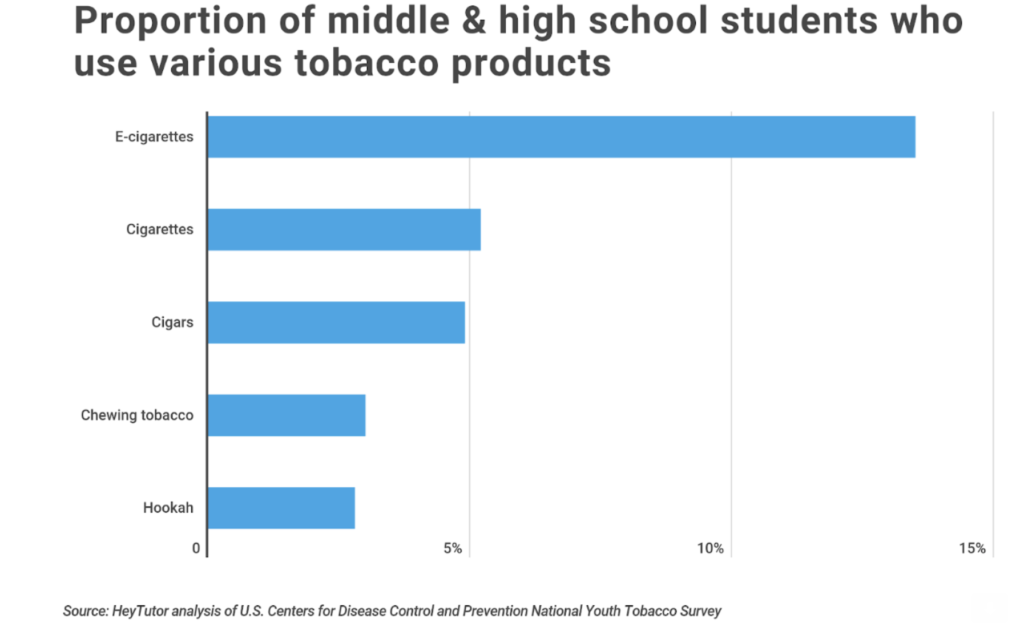Between 2017 and 2018, e-cigarette use among middle and high school students increased by a shocking 70 percent, representing 1.5 million new smokers, according to data from the CDC. The sharp uptick in e-cigarette use among teens is especially troublesome as it has led to a net increase in overall tobacco use despite declining cigarette sales. Between 2017 and 2018, use of tobacco products increased by 38.3 percent among high school students and by 28.6 percent among middle school students. E-cigarette use among the adult population, on the other hand, remained flat.
In 2018, e-cigarettes were the most commonly used tobacco product among middle and high school students at 13.5 percent, followed by traditional cigarettes, cigars, chewing tobacco, and hookah. Among the adult population, regular cigarettes still dominate people’s tastes at 16.1 percent, followed by e-cigarettes, and smokeless tobacco, according to data from the Centers for Disease Control and Prevention.

While e-cigarettes are most popular among teens, the CDC doesn’t offer data at the local level for individuals under 18. Because of this, e-cigarette use among the adult population was used in the metropolitan area analysis. Among adults, the current use of e-cigarettes is positively correlated with the proportion of whites in a metropolitan area (correlation of 23 percent). The analysis also finds a statistically significant relationship between the usage of electronic cigarettes and depression. This is consistent with CDC data reporting that among adults who report serious psychological distress, more than 40 percent use a tobacco product, compared with less than 20 percent of the population without serious mental distress.
To find which cities have the highest e-cigarette smoking rates, researchers at HeyTutor analyzed data from the Centers for Disease and Control Prevention, the U.S. Census, and the National Youth Tobacco Survey. Here is a summary of the data for the metropolitan areas with the highest e-cigarette usage:

For more information, a detailed methodology, and complete results for cities facing the worst e-cigarette problem, please see the original report on HeyTutor.
